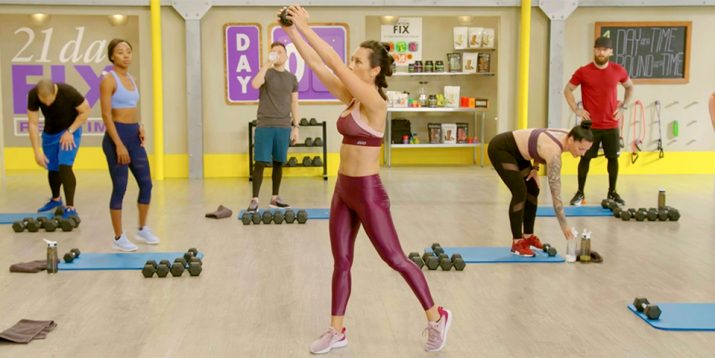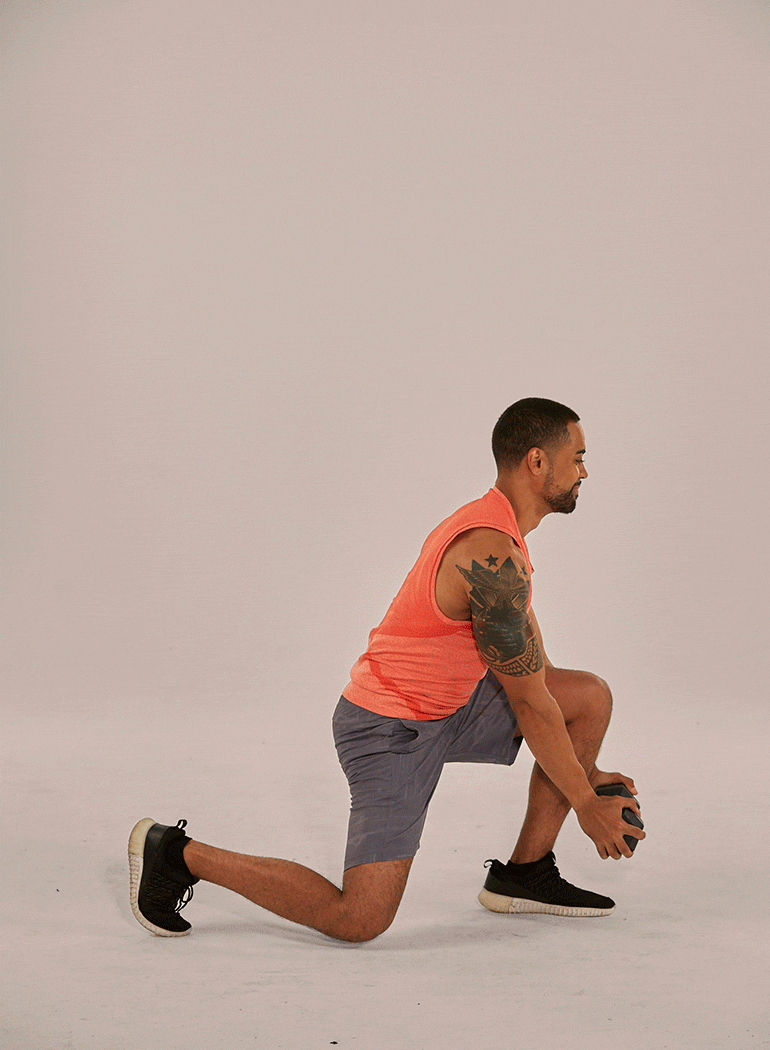Try the Dumbbell Reverse Chop and Give Your Workouts a Twist

Most gym workouts suffer from the same problem: They occur in a single plane of motion. That’s because most well-known exercises (e.g., squat, deadlift, push-up, etc.) entail either a front-to-back or up-and-down movement, landing them squarely in the “sagittal plane.”
If you also perform side-to-side movements, like the lateral lunge, you get points for hitting the frontal plane, but odds are you’re still neglecting the third plane of motion (transverse) and a key movement pattern: rotation.
To build real-world strength and power, you need to give your workouts a twist with exercises like the dumbbell reverse chop.
In addition to nailing your core — which controls rotational movement — you’ll target your shoulders and quads. You’ll also crank up your heart rate as a host of secondary muscles kicks in to help you execute this total-body move.
Ready to give it a try? Follow along with Maricris in the video below as she demonstrates perfect form.
Dumbbell Reverse Chop: Step-by-Step Instructions
Muscles targeted: Core, shoulders, quads.
Featured in: 21-Day Fix, available on Beachbody On Demand.
- Stand with your feet shoulder-width apart, holding a dumbbell in both hands in front of you at arm’s length.
- Keeping your back flat and core braced, bend your knees and rotate left, lowering the dumbbell to the outside of your left knee. That’s the starting position.
- In one explosive movement, stand and rotate to the right, pivoting your left foot as you lift the weight above your right shoulder.
- Reverse the movement to return to the starting position. Perform an equal number of reps on both sides.

Make it easier: Use a lighter weight, or only bend your knees slightly, lowering the weight to the outside of your left hip.
Make it harder: Use a heavier weight, or lower the weight all the way to the outside of your left foot.
Bonus tip: Keep your arms straight to maximally engage your shoulders as you lift the weight. Also, be sure to rotate your shoulders and torso as a single unit — you don’t want to twist your spine.
